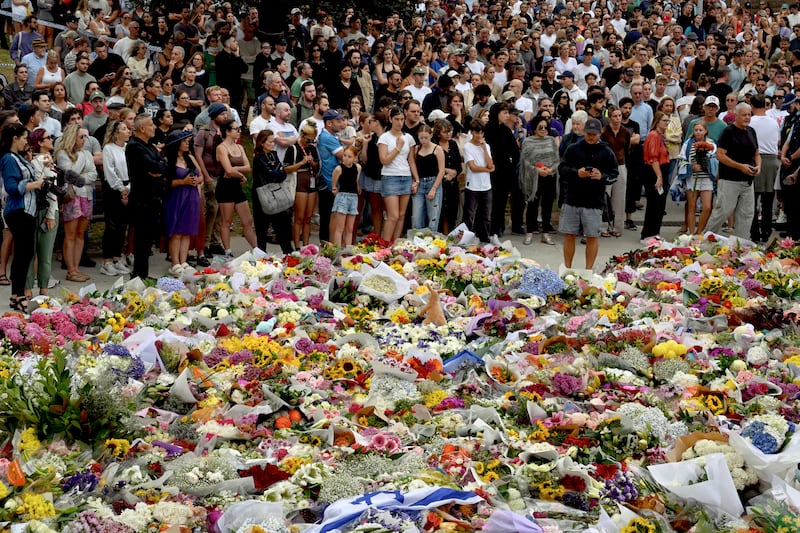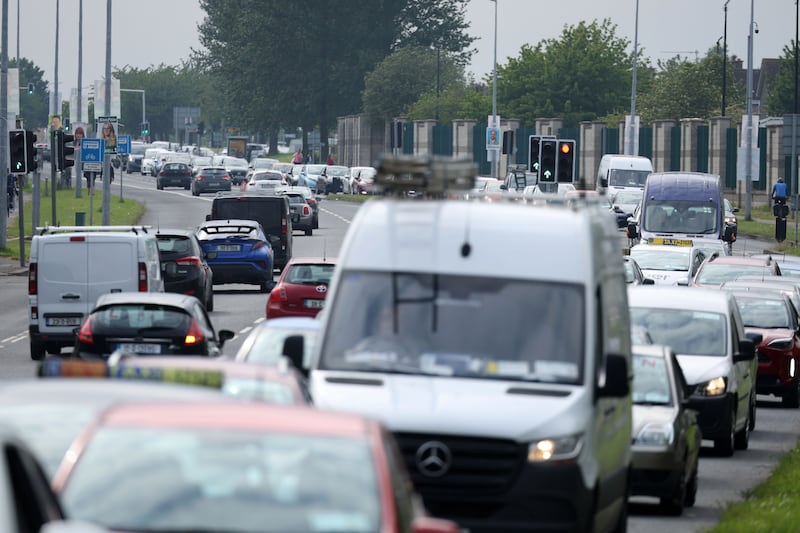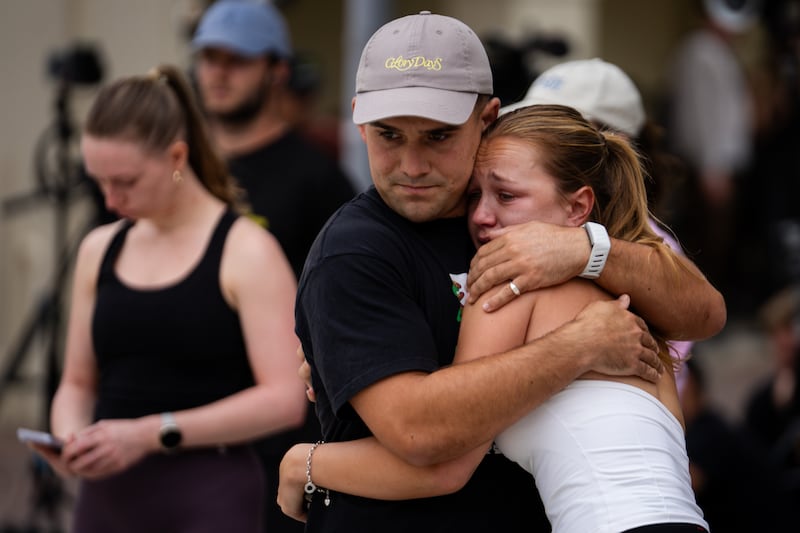This week we learned that multicultural Ireland is contributing to a growth in the Presbyterian Church. But numbers of the Church of Ireland community are reducing.
The Rev Rob Jones is rector at Holy Trinity Rathmines in Dublin. There is, he says, “a genuine sense across the West that churches are in decline and they need to do new things to reach out”. He believes “God works in seasons, things being cut back and pruned, and then he rebuilds. I think we’re in a massive paradigm shift which is bigger than anything that has gone maybe since the Reformation.”
In his view, “we do not need to lament being a minority and we need to learn humbly from other minority groups – a key point – and acknowledge the wrong attitudes that have accompanied being part of the dominant culture. I think that’s a key part of the future, being a creative minority as opposed to an oppressive majority,” he says.
“I think this is a key part of the future of the church, a committed group of people who neither control nor abandon the world but engage in it.”
READ MORE
At Holy Trinity Rathmines, “we have pioneered something new. We’ve gone after the young generations. We’ve listened to them and we’ve changed how we do things, not to change the message but to change how we actually do things to reach out to them. We’ve really grown.”
In 2011, Holy Trinity Rathmines was attended by “15 elderly people. Now there are hundreds of young people.” The “pews are gone, liturgy is different, we do lots of dialogue, we don’t do monologues, it’s a different way of doing church.”
They “do lots of stuff outside of a Sunday because I think Sundays are gone now” with the focus “in homes, around meals”, he says. “Part of what we do in Pioneer Ministry is create a place where anyone can belong, first, before they believe anything and before they behave in a certain way. So, for young people, being accepted for what they are is absolutely vital.”
The younger generation “are flocking away from the church”, yet are “becoming more spiritual”. There was “a deep sense of spirituality in their music. I think their sense of spirituality is in being open to the world around them.”
They are the first generation who are “more interested in spirituality as opposed to organised religion, and it’s fascinating. We’re kind of going back to a time of Patrick, who dealt with a pagan philosophy and people open to something more than themselves. But organised religion wasn’t something they were up to. I think we’re kind of in that time again, of tapping into the spirituality which is so important in the life of our island.”
Numbers attending Church of Ireland Sunday services across the island of Ireland “would not fill the seats and stands of the Aviva Stadium, once,” Archbishop of Dublin Michael Jackson has said. On any of the four Sundays on which a census of attendance was taken across the church in 2023, “numbers were around 40,000″, he said, adding that it meant “there is now one church building for every 49 people”.
He notes that “between 1.6 and 1.8 million people live in the Greater Dublin Area”, yet the 2023 census found total attendance at Church of Ireland Sunday services in the diocese “barely scrape over the 5,000 mark”.
Overall, the church’s internal 2023 census of attendance at those Sunday services showed a drop of 30 per cent on a similar census in 2013, he said.
Jackson presented the figures in his presidential address to the synods of Dublin and Glendalough dioceses last month. “This is who we are and where we are,” he said, with more and more people in suburban parishes “telling me and others that they feel the boat has already sailed”.
He spoke of “dis-ease and disgruntlement and, even from time to time, defeat” among people in the church, “an organisation that has all the signs of slipping away from them and from everything that they have held dear in their everyday church lives.” This, he said was “not begrudgery. This is not even sentimentality. This is bereavement. This is distress. This is real alienation. This is most worrying.”
The 2023 Sunday services census to which Jackson referred took place in all Church of Ireland churches across the island last year on February 5th, June 11th, September 17th and November 26th. It found that 40,117 church members in Ireland attended services on February 5th, 42,209 on June 11th, 42,570 on September 17th and 44, 557 on November 26th, making a rough average of about 42,000.
I don’t think the Church of Ireland is going to wipe itself out or anything like that
A similar census was carried out in the church over three Sundays in November 2013. It found average attendance at 58,000 people, or 15.5 per cent of the Church of Ireland population, as defined by the 2011 censuses in the Republic and Northern Ireland.
According to the combined 2022 census in the Republic and the 2021 Northern Ireland census, there are approximately 345,000 Church of Ireland members on the island (124,749 in the Republic, 219,788 in Northern Ireland), meaning attendance of 42,000 at those Sunday services in 2023 amounted to about 13 per cent of its population.
However, even as Church of Ireland attendance at Sunday services continues to decline, its population in the Republic has grown. According to the Republic’s 2022 census, its Church of Ireland population grew by 2 per cent (from 122,612) since the previous census of 2016.
The 2021 Northern Ireland census showed Church of Ireland membership there had dropped 2.2 per cent to 11.5 per cent of the population, from its 248,821 members in 2011.
On the difference between those who claim Church of Ireland membership and those who attend its Sunday services, church spokesman Peter Cheney says “the overall number of people who currently self-identify as members of the Church of Ireland is likely to be considerably closer to the State census figures”.
Church of Ireland Dean of Limerick Niall Sloane says the Church of Ireland is not about to disappear. “My own experience is one of growth. I cover the whole of the city of Limerick which includes the cathedral, an urban church and one rural church out in Murroe.” Since 2013, “numbers have doubled”, he says. “I don’t think the Church of Ireland is going to wipe itself out or anything like that.” He continues: “We’ve had a new bishop this past two years and in the short time he’s been here we’ve seen that all our parishes, by Advent Sunday, will be filled.”
I would say now that we would have as many people involved in our parish and attending worship as we have 10 years ago, and in some cases more, but not as often
The diocese is the largest geographically in Ireland, taking in most of the Wild Atlantic Way from Sligo to Cork. “People are drawn to the west.” During Covid, people “decided they don’t want to be in the rat race of living in a city, with all the expense and all that, so people are going west”, Sloane says.
In the summer numbers “significantly grow, places like Spanish Point in Co Clare would have significant numbers, Roundstone in Galway, people holidaying, vacationing, with summer homes, et cetera”. Helping growth in Limerick, he felt, was a liturgy which “is carefully constructed, worship is at the heart of it all but it’s thoughtful, preaching is meaningful, pastoral care is careful”.
Archdeacon of Armagh Peter Thompson says the Church of Ireland is not in danger of disappearing in Northern Ireland. “Not at all,” he says. Worship has become “more diverse and Sunday morning isn’t the only time people worship. In my parish we have more people working at weekends now – in healthcare, hospitality, retail.”
People were “much more mobile”, while attendance at a midweek Wednesday service had “increased by 150 per cent in the last five years, because people aren’t always available on a Sunday”. The census did not provide “the full picture of attendance at worship at all and that’s before we touch on online worship”, he says. Since Covid “we’ve gathered a sizeable number of regular worshippers who are physically unable to be present on a Sunday”.
Canon Gillian Wharton, rector at St Philip and St James’ Church in Booterstown, Co Dublin, says: “There’s a different way in which people now participate in worship and a different dynamic that’s going on. So, even if you are looking back to 2013, I would say now that we would have as many people involved in our parish and attending worship as we have 10 years ago, and in some cases more, but not as often.”
She explains: “Ten years ago we didn’t have the amount of sports activities on a Sunday morning.” That is now “absolutely the case and we have to constantly battle with that”. In her parish, “we would have, I would say, the same number, in fact more people attending and involved, not as often”.
Wharton adds: “We’re not sticking our heads in the sand either, thinking that there isn’t cause to constantly evaluate and review.” People were now “choosing to opt in. They’re making a positive choice.”
Hazel Corrigan, honorary secretary to the Church of Ireland General Synods, does not believe there is any cause for alarm in the church over declining numbers. People probably need to look at the issue “a bit wider, in that – and I can see it in my own parish – there are more people working at home, there are so many kids’ sports now, with so many other activities going on. The days of attendance which was obligatory driven by your parents making you go to church, those days are gone.”
The church’s national youth officer Simon Henry recalls how this year the church’s “Summer Madness, Ireland’s largest Christian youth festival, had over 200 young people come to faith this summer for the first time, with the biggest numbers attending that since pre-Covid”.
It was also the case now that “a lot of youth work is not done on a Sunday morning” but “mostly during the week”.
Still, in February 2023, the church launched its Pioneer Ministry, with the aim “of reaching those outside the church in new ways and in different places”, according to its website. It notes how “over the last 50 years, attendance and membership of the Church of Ireland has progressively declined, as has also been observed in many other Christian denominations in western societies”.
This, it says, “has resulted in a narrowing of the fringe of people with whom traditional church can connect. There are now more people in our communities who have no engagement with the church and no understanding of the Christian message. New approaches to ministry – pioneer ministries – are needed to cross cultural barriers to enable the Gospel to be shared with people who are well beyond the fringe.”
- Sign up for push alerts and have the best news, analysis and comment delivered directly to your phone
- Join The Irish Times on WhatsApp and stay up to date
- Listen to our Inside Politics podcast for the best political chat and analysis



















